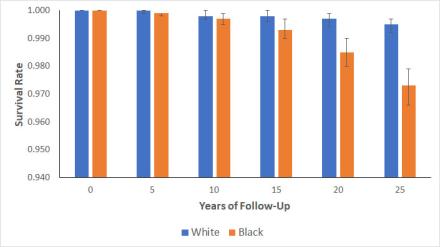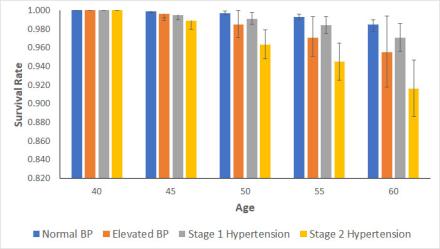May is Stroke Awareness Month, an opportunity to remember that despite amazing advances in research and clinical care, stroke continues to be the fifth leading cause of death and a leading cause of adult disability in the United States. According to the 2018 National Health Interview Survey, 7.8 million adults in the United States have experienced a stroke during their lifetime. After decades of steady decline in stroke risk due to improved blood pressure control, recent data that suggests that this decline has been stopped by the rising rates of obesity in the U.S. Stroke can affect people of all ages and backgrounds and cause lasting brain damage in a matter of minutes to hours. In addition, there is evidence that the wear and tear injury to the brain’s blood vessels due to high blood pressure contributes to age-related cognitive decline and dementia. It is indeed tragic that death and long-term disability continue despite proven preventative measures. In recognition of Stroke Awareness Month, NINDS has relaunched the Mind Your Risks public health campaign to raise awareness of the connection between high blood pressure and stroke as well as age-related cognitive decline.

There are also sobering and persistent disparities across the U.S. in the prevalence of stroke and hypertension. The prevalence of hypertension is higher among non-Hispanic Black adults compared to Hispanic and non-Hispanic white adults, and African-American women have the highest rates of stroke. A recent study suggests that non-Hispanic Black men have the lowest 5-year survival rate following acute ischemic stroke, compared to other racial and ethnic groups. NIH supports several large, long-term studies in specific populations to understand what contributes to those differences. Examples include the Northern Manhattan Study (NOMAS), which is looking at risk factors in whites, Blacks, and Hispanics living in the Washington Heights area of Northern Manhattan, and the Reasons for Geographic and Racial Differences in Stroke (REGARDS) study, which has recruited over 30,000 participants, focusing on the Stroke Belt, a large region of the southeastern U.S. so named for its higher than average stroke risk and mortality. In addition, the Brain Attack Surveillance In Corpus Christi (BASIC) study aims to answer important questions about stroke, including what contributes to differences in stroke risk and outcomes between non-Hispanic whites and Mexican-Americans. It is the nation’s only major study of stroke in Mexican-Americans.

Hypertension, or high blood pressure, is the most important and controllable risk factor for stroke and heart disease. For most adults, a healthy blood pressure is 120/80 mm Hg. Over the past few years, there has been an increase in the number of studies that also connect hypertension with age-related cognitive decline and dementia—suggesting that what is good for the heart is good for the brain. Chronic hypertension can weaken blood vessels throughout the body, including those that supply the brain with valuable nutrients. White matter disease is a common finding on brain scans as people age. It is one of the effects of high blood pressure on the bundles of nerve fibers that connect brain regions. Like stroke itself, white matter disease is associated with age-related cognitive impairment. Recent findings from the SPRINT-MIND (Systolic Blood Pressure Intervention Trial-Memory and Cognition in Decreased Hypertension) study suggest that intensively controlling blood pressure may help reduce the risk of mild cognitive impairment as well as slow the accumulation of white matter lesions. The study was supported by both NINDS and the National Institute on Aging (NIA).
The updated NINDS Mind Your Risks public health campaign aims to raise awareness of the connection between high blood pressure, stroke, and dementia. The new campaign, “Nobody’s Got You, Like You Got You,” encourages younger Black men to take charge of their health now, to reduce their risk of stroke and dementia in the future. Black men in their late 20s to mid-40s are at high risk for developing hypertension. We eagerly hope that awareness of its link to cognition as well as stroke and heart disease will encourage and empower middle aged men to regularly self-monitor their blood pressure and take active steps to control it within the healthy range. NINDS Deputy Director Nina Schor touches on the campaign and other efforts in her latest blog post.
NINDS has many partners who share our goals to raise awareness about risks associated with hypertension and urge preventive actions. We will be joining them on May 17th, to recognize World Hypertension Day. Our colleagues at the American Stroke Association are also introducing an important public health campaign this month, encouraging Black and Latina women ages 25-64 to monitor their blood pressure to help control their risk of stroke. In 2020, the Surgeon General issued a Call to Action to Control Hypertension, and the Department of Health and Human Services recently launched the National Hypertension Control Initiative. NINDS is actively collaborating on this panel.
Although May is Stroke Awareness Month, we are hard at work year-round on these efforts. Now more than ever, all hands are on deck as we all work towards reducing the number of strokes, getting blood pressure under control, and improving the public’s (brain) health!
Related Resources
